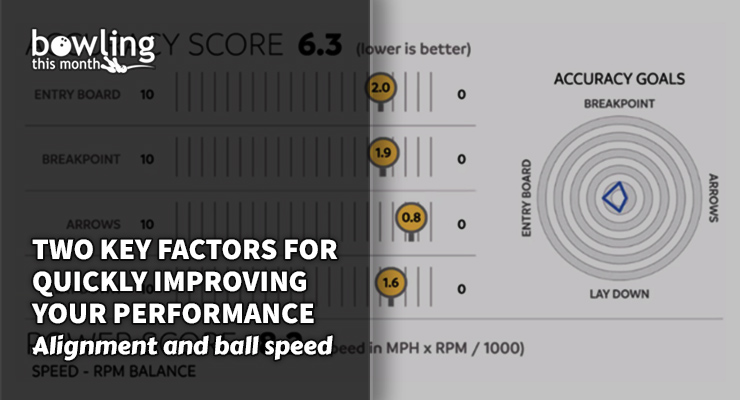Article Contents
- 1. Improving alignment
- 1.1. Finding your laydown point
- 1.2. The curved misperception
- 1.3. Before adjusting alignment
- 1.4. After adjusting alignment
- 1.5. Alignment = precision
- 2. Increasing ball speed
- 2.1. Finding a better speed for your game
- 2.2. Implications of the higher speed
- 3. Getting comfortable
- 3.1. What to do
- 3.2. Challenges and concerns
- 4. Final thoughts
Note: This article is only available to Bowling This Month subscribers.
As a high-performance bowling coach, I don’t really deal with “quick fixes.” There’s no secret to success or shortcut to the top of the podium. However, I am interested in helping athletes achieve their goals faster.
As a result, I’ve spent some time studying different changes and adjustments to bowlers’ games and which ones seemed to provide the most value. In this article, I will present you with the two most important changes that a bowler can quickly make to their game: improving their alignment and increasing their ball speed.
That second one might feel a bit scary to some bowlers, but when we look at my approach and the data that confirms the results, you’ll see just how easy it will be to improve your performance.
Improving alignment
A few years ago, I wrote an article about alignment and the ETT system developed in Europe. I’d like to review those concepts first, and then show why alignment is both the easiest thing to change and probably the most significant.
Finding your laydown point
While this method isn’t foolproof, it’s the simplest way to approximate where you want to lay the ball down for a given target path:
- Establish your desired targets at the arrows and the breakpoint, approximately 45 feet from the foul line (i.e., 10 and six, respectively).
- Subtract the breakpoint number from the arrow to get the lateral distance (i.e., four boards).
- Divide that number by two, and then add it to the target board at the arrows (i.e., two plus 10).
In this example, the laydown point is board 12. Next, we have to establish our slide board by determining how far we lay the ball down from our ankle. If we lay the ball down five boards right of our foot (for a righty), then we add those boards to find our slide board, which is 17 in this example.
For a more detailed explanation, refer to the article linked above.
In my experience, many bowlers trying to play 10 to 6 end up sliding much farther inside than they need to. And here’s why I believe that is the case.
The curved misperception
The path of the bowling ball is not straight. As mentioned in my earlier article, part of the reason we have a skewed perception of the lane is because of how wide we think it is compared to ...
Already a premium member? Click here to log in.


